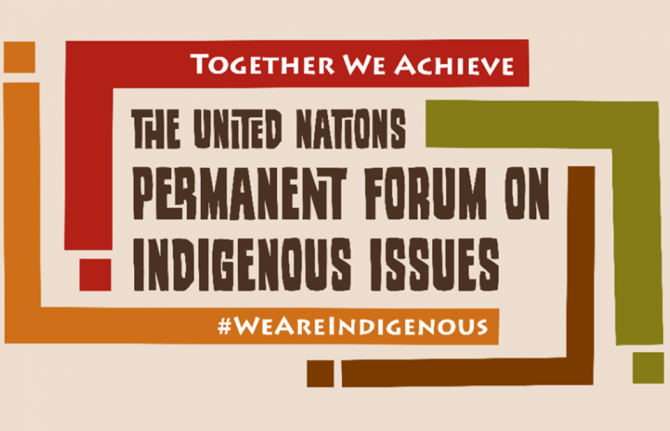

Press Statement
UNAIDS statement at the UN Permanent Forum on Indigenous Issues
25 April 2025 25 April 202524th session of the United Nations Permanent Forum on indigenous issues, Agenda item 4: Discussion on the six mandated areas of the Permanent Forum (economic and social development, culture, environment, education, health and human rights), with reference to the United Nations Declaration on the Rights of Indigenous Peoples and the 2030 Agenda for Sustainable Development.
NEW YORK, 25 April 2025 — Indigenous Peoples often face higher rates of health risks, greater unmet needs for health and social services and poorer health outcomes than non-Indigenous populations. Indigenous Peoples in some contexts are more vulnerable to and disproportionately affected by HIV, tuberculosis and Hepatitis C due to multiple and intersecting inequalities that they face, including racism, poverty, discrimination and marginalization.
Through various initiatives, UNAIDS ensures that the rights and health needs of Indigenous Peoples, including Indigenous women and two spirit people, are part of its efforts. We remain committed to promoting intercultural sensitivity and inclusivity in planning and delivery, addressing the root causes of the HIV disparities faced by Indigenous communities.
UNAIDS is dedicated to addressing the significant disparities in HIV prevalence among Indigenous Peoples, particularly in Latin America, where, in some areas, rates can be up to six times higher than in the general population. This alarming situation arises from systemic challenges, including the lack of decentralized, differentiated, and interculturally sensitive health approaches tailored to the specific HIV needs of Indigenous communities.
To combat these inequalities, UNAIDS, together with other partners, facilitated the launch of an Indigenous-led Coalition on HIV in Latin America. This Coalition promotes a regionally coordinated approach, emphasizing the design and implementation of culturally appropriate strategies to tackle HIV within Indigenous populations.
The Global AIDS Strategy for 2021–2026 and the 2021 UNGA Political Declaration on HIV/AIDS have, for the first time, recognized Indigenous Peoples as a priority population for HIV response. UNAIDS defines priority populations as groups of people who in a specific geographical context (country or location) are important for the HIV response because they are at increased risk of acquiring HIV or disadvantaged when living with HIV, due to a range of societal, structural or personal circumstances. Both documents set bold targets to be met by 2025 among all demographic groups and geographic settings.
Work is under way to develop the next Global AIDS Strategy for 2026-2031. It will inform deliberations of the 2026 High-Level Meeting of the UN General Assembly on HIV/AIDS and its expected Political Declaration.
It is important to make sure that the progress and challenges in addressing the AIDS epidemic among Indigenous Peoples are adequately considered in the development of the new Global AIDS Strategy. Meaningful participation and contribution of Indigenous Peoples will be essential. The current representation of Indigenous Peoples —through the membership of National Native American AIDS Prevention Center (NNAAPC), representing the geographic region of North America— in the NGO Delegation of the UNAIDS’ Programme Coordinating Board (PCB) is an important avenue for effectively including community voices in the development of the new Strategy. Indigenous Peoples’ organizations have also been invited to participate in the global consultations on community leadership, and regional and country consultations in Latin America and Caribbean.
UNAIDS calls on Member States, UN and other stakeholders and partners to strengthen efforts for the empowerment and participation of the Indigenous Peoples in the decision making related to their health, including HIV.
UNAIDS
The Joint United Nations Programme on HIV/AIDS (UNAIDS) leads and inspires the world to achieve its shared vision of zero new HIV infections, zero discrimination and zero AIDS-related deaths. UNAIDS unites the efforts of 11 UN organizations—UNHCR, UNICEF, WFP, UNDP, UNFPA, UNODC, UN Women, ILO, UNESCO, WHO and the World Bank—and works closely with global and national partners towards ending the AIDS epidemic by 2030 as part of the Sustainable Development Goals. Learn more at unaids.org and connect with us on Facebook, Twitter, Instagram and YouTube.
